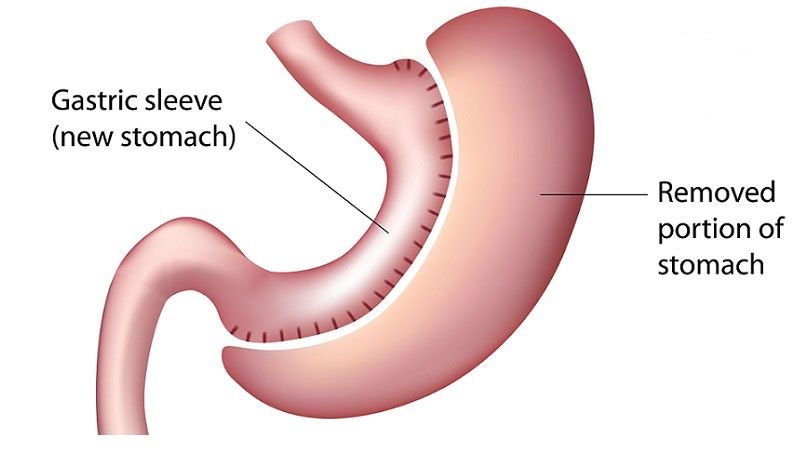Request An Appointment
Gastric Sleeve
This is also known as a sleeve gastrectomy or vertical sleeve. It is usually performed laparoscopically (keyhole surgery). This is a restrictive surgery. The aim of the surgery is to reduce the size of your stomach. Normally when you eat, your stomach expands and stores the food you have eaten. A hunger hormone is also produced by the stomach, promoting your appetite. In a sleeve gastrectomy, approximately 75% of your stomach is removed. It turns your stomach from a storage compartment, into a tube. This tube no longer has the same storage capacity as your original stomach, and essentially acts as a conduit. Furthermore, less hunger hormone is produced as most of your stomach that produces the hunger hormone has been removed.
Not everyone is a suitable candidate for this procedure, and this will be discussed during consultation.
This is currently the most commonly performed bariatric surgery / weight loss surgery (WLS) worldwide. Essentially, this converts the stomach from a storage compartment, into a tube. This is achieved by surgically removing approximately 75% (more or less) or your stomach. When you eat, food is stored in your stomach. Following a gastric sleeve, there is less food storage capacity for the stomach. Your stomach will also produce less of the hunger hormone called ghrelin.
On average, your stomach capacity after a sleeve gastrectomy will change from 1500mL to 200mL. Removing most of your stomach during a sleeve gastrectomy means that less of the hormone ghrelin is produced. Another hormone is altered after a sleeve gastrectomy. This is the hormone (GLP-1). The level of this hormone after a sleeve gastrectomy is increased, which leads to hunger reduction and increase in satiety. A sleeve gastrectomy can also reduce the amount of fat in your liver.
A gastric sleeve can be performed either as a primary procedure (no previous weight loss surgery) or as a revisional procedure – for example in someone who has a gastric band (“lap-band”) that is no longer tolerated or effective.
The main risks involved with a gastric sleeve include bleeding, leaking along the surgical staple line, and stricture. These risks will be discussed in further detail at the time of your consultation. There are techniques that Mr Bassari performs to help reduce these risks.
It is less morbid than a Roux-en-Y (also known as gastric bypass) surgery.
Request An Appointment


